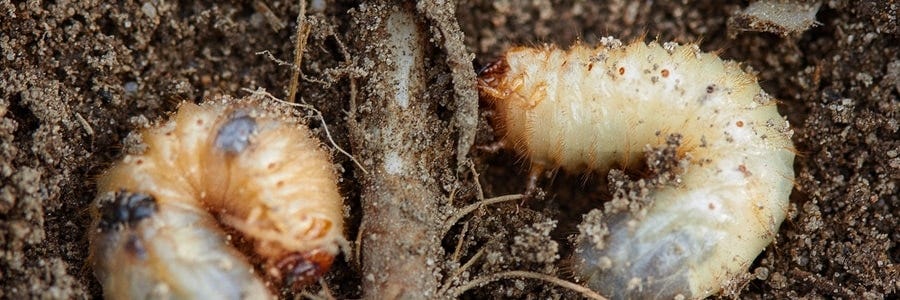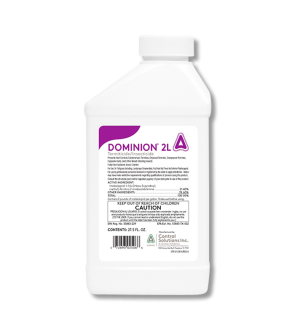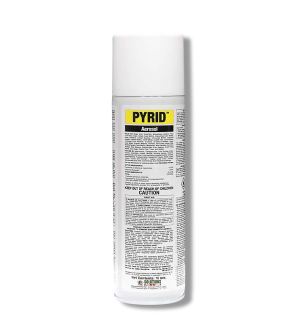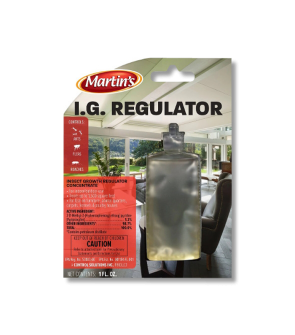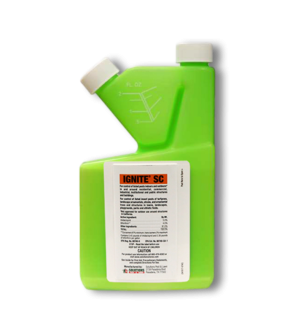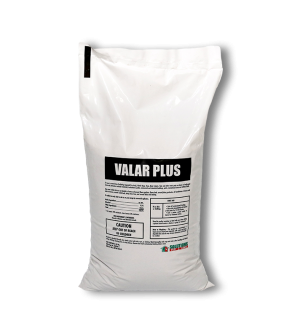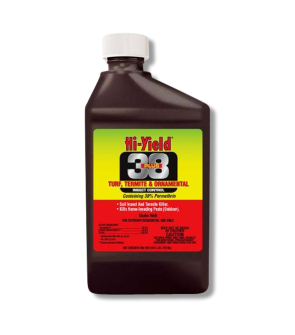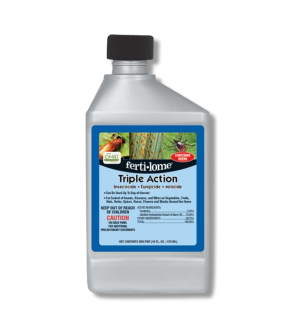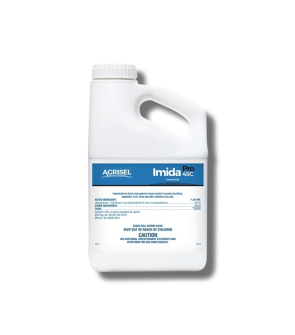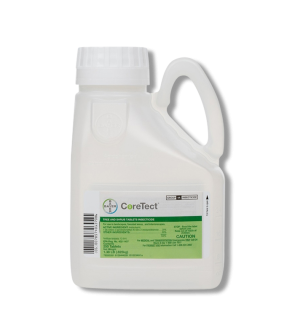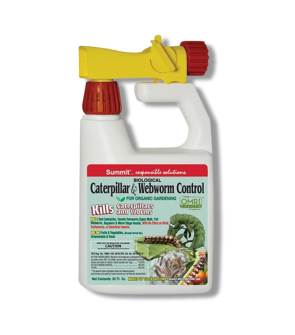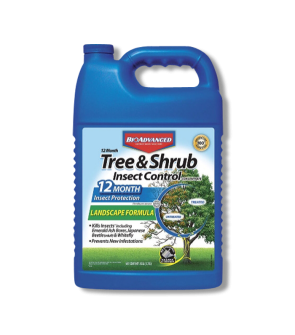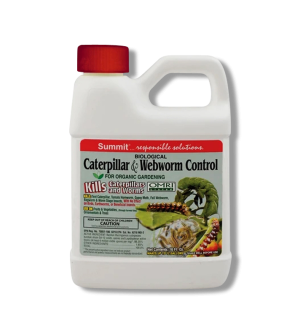Turf Insects
Most Effective Products
Turf Insect Control: How to Get Rid of Turf Insects
This page is a general turf insect control guide. Using the products and methods suggested you can get control of any turf insect species. The turf insect category pages give additional information on the different species. Follow these guides and use the recommended products and we guarantee 100% control of all turf insects.
Turf pests like white grubs, chinch bugs and sod webworms can be extremely damaging to your lawn. You may initially believe the reason your turf quality has gone down is because of lack of nutrients, water, harsh weather conditions, or possibly even lawn disease or fungus. In reality, turf insects may be the culprit.
Turf insects are usually hard to detect because they hide underneath the soil. Signs that you may have turf insects on your lawn are patches of yellow or brown on the grass, eaten grass blades and other concerning issues. By taking a look underneath your turfgrass, you may find them tucked away eating at the roots of your lawn’s vegetation.
Turf insects are not a human threat but they can injure your lawn significantly if there is a large population present. Often the damage can be so severe that your lawn turf can be peeled off the lawn with ease like a rug. If it gets this bad, action must be taken to address the invasion.
Our turf insect control guide below was put together by experienced lawn care pest control experts so if you follow our step by step instructions exactly and apply the turf insect control products we recommend, you can rid of these lawn eaters from your yard for good, and save money doing it.
Identification
Before proceeding with treatment, you will need to be certain of the turf insect species infesting your property. Misidentification can lead you to using the wrong pesticides, which can be a waste of your time and finances. This can be easy or require a little more effort depending on the bug. The more common insects that damage turf are grub worms, chinch bugs, sod webworms, armyworms, cutworms, and mole crickets.
- Turf pests can either be classified in one of two groups: surface or sub-surface feeders. Surface feeders are those pests that prefer to eat the parts of the plant above the soil (grass blades, stems, leaves, etc) and will be seen moving along the grass surface. This group includes Chinch Bugs, Sod Webworms, and Armyworms.
- Sub-surface feeders, like Grubs and Mole Crickets, live underground in the soil and feed off of plant roots. Sub-surface feeders are not visible since they are in the root zone of the turf. Digging up a 1 foot square about 2” deep around the affected area will help to discover these types of pests.
Refer to our library of common lawn pests here to find out more about what turf insect may be on your lawn and what application methods and products can best control the offending pest.
Inspection
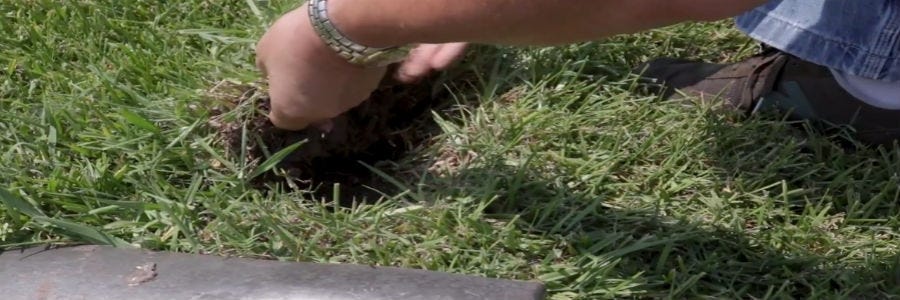
Once you have identified the specific turf pest you are dealing with, you will need to perform an inspection to see how severe of a problem you have on your hands and where the infestation is concentrated.
Where to Inspect
At times, you may see a turf insect visibly crawling on your lawn. If not, you may have to do a little digging in your yard and grab a magnifying lens to see what you have in the soil.
What to Look For
Probe areas of your lawn where there are damaged patches by pressing back on segments of turn to look for any movement or activity of intruding lawn pests. Another thing you can do during the inspection is pull on the grass blades themselves. If the plant or grass is able to easily be yanked out without much effort, you may very well be dealing with a turf pest.
One easy way to become certain that you are dealing with turf insects after detecting damage to your lawn is by mixing some soapy water and pouring it over the suspected area. Using a hollowed out coffee can, drive the can about 3 inches into the ground where you have noticed damage and then pour the solution inside.
The pouring of this solution should result in whatever turf insect problem you have to come to the surface and out of hiding so they could be collected, observed and properly identified.
For sub-surface feeders Insects that live below the soil, you may need dig or cut out of a piece of your lawn and going at least three inches deep. When a lawn insect infestation is particularly severe, your turfgrass should pull away from the soil very easily almost like rolling up a rug which will show the damaging lawn pests underneath.
Treatment
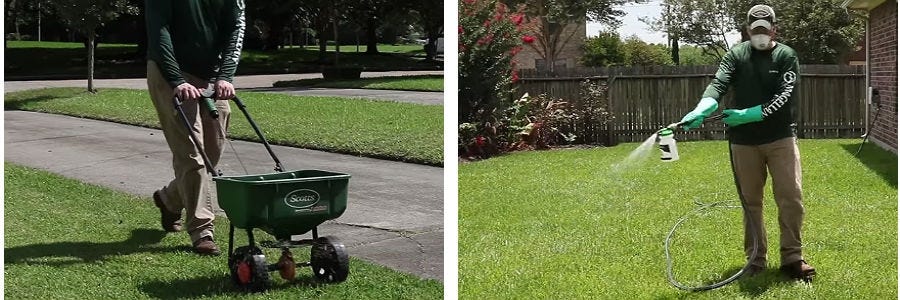
Prior to handling pesticides, start by equipping yourself with the proper PPE. At bare minimum, you should have some gloves, goggles and a respirator mask prior to application.
Our top recommended options for eliminating turf insects are Dominion 2L and Valar Plus Bifenthrin Granules. These products work best because they have a broad spectrum label, meaning they can target a wide variety of insects, including turf insects.
If you aren't sure which turf insect you have, chances are Dominion 2L and/or Valar Plus Bifenthrin Granules are labeled for it and will do the trick.
Step 1 - Apply Valar Plus Bifenthrin Granules

Valar Plus Bifenthrin Granules is a granular insecticide labeled to kill many different common turf-damaging insects.
Determine how much Valar Plus Bifenthrin Granules you need to apply by first calculating the square footage of the area to be treated. To do this, measure (in feet) and multiply the area length times the width (length x width = square footage).
The labeled rate for a broadcast application is 1.15 to 4.6 lbs. per 1,000 sq. ft depending on the pest you are treating. For residential lawn applications, use 2.3 lbs. per 1,000 sq. ft.
Load your spreader with the proper amount of Valar Plus Bifenthrin Granules and then evenly distribute it throughout your treatment area.
For even coverage, broadcast the granules in two passthroughs with the first pass going in parallel lines. The second pass should be broadcast at a perpendicular angle.
Step 2- Apply Dominion 2L

After applying the Valar Plus Bifenthrin Granules, you will need to water the product in so it can reach the turf's root zone with Dominion 2L. Dominion 2L is a liquid systemic insecticide, so it will be absorbed into the turfgrass. Pests that will feed on the grass will be poisoned and die.
Dominion 2L should be applied at a rate of 0.46 to 0.60 fl. oz. per 1,000 sq. ft. We recommend using a 20 gallon hose-end sprayer to broadcast the insecticide over the turf efficiently. For treating isolated areas of turf, use a 1 gallon sprayer to spot treat.
To use the hose-end sprayer, remove the reservoir from the nozzle and make sure the sprayers control valve and water pump are off and then attach the hose-end sprayer nozzle to the hose. Add the proper amount of Dominion 2L, then fill the reservoir with enough water to treat the entire lawn. Spray 2 gallons of water for every 1,000 sq. ft. to thoroughly coat the area.
Reattach the reservoir to the nozzle and turn the water to the hose on. You are now ready to spray. To spray, push forward on the control valve. Evenly distribute the entire amount of product over the treatment area, making sure to keep track of the product in the reservoir.
Prevention

Prevent turf insects from returning to your yard by following the listed preventative strategies listed below:
- The best way to prevent lawn grubs and other turf insects from returning after you’ve eliminated them with insecticides is to perform regular lawn maintenance. Keep your lawn healthy with routine mowing, watering, fertilization, and aeration to deter turf pests.
- All lawn-damaging pests are cyclical and best practices for prevention involve knowing when these cycles are developing and making applications before their active period. When the damage becomes visible, the invaders have usually caused significant damage that will be seen as an after effect.
- Quarterly follow-up applications of Dominion 2L and Valar Plus Bifenthrin Granules may also be used as a preventative application.
Key Takeaways
What are Turf Insects?
- Turf insects are pests that are known to damage lawn grasses and plants with their feeding habits.
- To control turf insects, identify the pest you have on your lawn, inspect to determine how severe of an issue you have and then apply our recommended products and you should get the problem under control.
How to Get Rid of Turf Insects
- Our recommended go-to products for Turf insect control is a broadcast application of Dominion 2L Insecticide and Valar Plus Bifenthrin Granules.
Preventing Turf Insect Reinfestation
- Prevent future turf insect invasions with routine lawn maintenance such as raking and dethatching your lawn, watering regularly and preventative treatments of Dominion 2L and Valar Plus Bifenthrin Granules.

